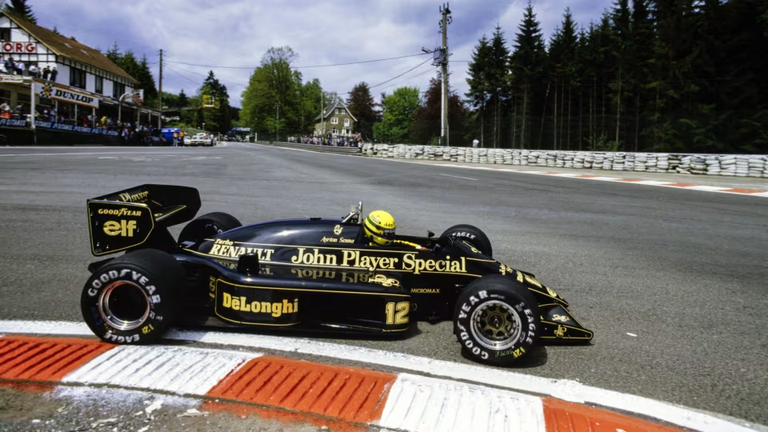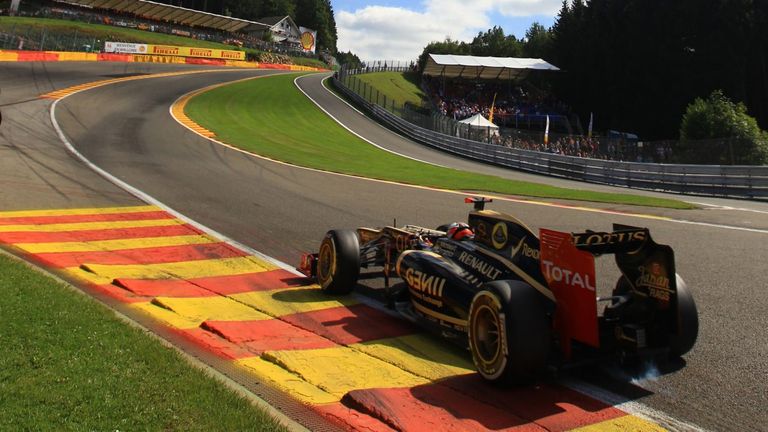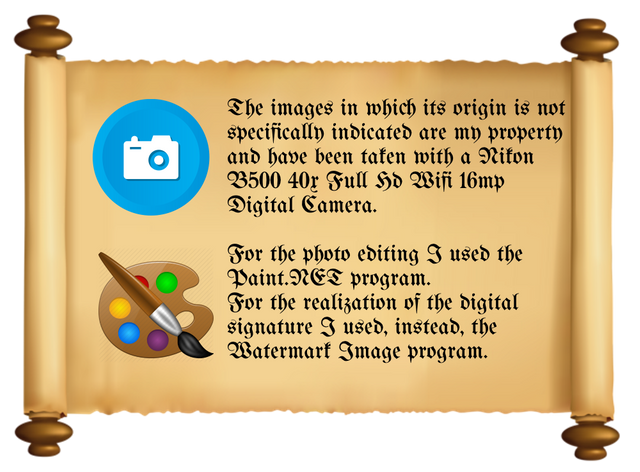
En los últimos años nos estamos acostumbrando a ver en la Fórmula 1 nuevos equipos que tienen una vida relativamente efímera (y en algunos casos podemos sacar directamente el adjetivo "efímeras" porque su vida es más que corta).
Proyectos como Marussia y Caterham en tiempos modernos y un poco más alejados en el tiempo como Super Aguri, Team Ensigne, Virgin, BAR, Jaguar, Jordan pasaron sin pena ni gloria por la máxima categoría del automovilismo deportivo, otros, en cambio, como Brawn, Benetton registraron un breve paso pero dejaron su marca y otros como Brabham y Lotus marcaron enteras décadas en la Fórmula 1 dándole brillo y prestigio.
Hoy quiero recordar con los #hivers deportivos de esta comunidad el paso por la Fórmula 1 de Lotus, su excéntrico manager Colin Chapman (se acuerdan?, era el que tiraba la gorra al aire cuando sus pilotos atravesaban la línea de meta ganando una carrera) y con uno de sus pilotos considerados el emblema del equipo: Nigel Mansell.
Muchas de estas casas automovilísticas han continuado a producir sus vehículos comerciales aunque hayan dejado de participar activamente en la Fórmula 1 como es el caso de Lotus, otras en cambio, marcando una tendencia que en esta temporada 2022 ve a Alpine y Aston Martin como ejemplos, ha resuelto usar la F1 como trampolín de lanzamiento para impulsar el marketing de sus marcas comerciales.
Algunas se han ido, otras se han ido y han vuelto con todo el brillo de aquel entonces como Mercedes, otras quieren estar debajo de los reflectores y el negocio que significa hacer parte de este deporte que tiene millones de aficcionados en todo el mundo como las dos citadas anteriormente y otras en cambio han seguido firmes en su sitial de verdaderos estandartes de esta categoría como Ferrari.
En Fórmula 1 es difícil participar por la enorme inyección de recursos técnicos y financieros que ello significa, pero más difícil aún es mantenerse.

In recent years we are getting used to see in Formula 1 new teams that have a relatively ephemeral life (and in some cases we can directly take the adjective "ephemeral" as its life is more than short).
Projects like Marussia and Caterham in modern times and a little more distant in time as Super Aguri, Team Ensigne, Virgin, BAR, Jaguar, Jordan passed without pain or glory by the highest category of motorsport, others instead as Brawn, Benetton recorded a brief step but left their mark and others like Brabham and Lotus marked entire decades in Formula 1 giving it brightness and prestige.
Today I want to remember with the sports #hivers of this community the passage through Formula 1 of Lotus, its eccentric manager Colin Chapman (remember, he was the one who threw his cap in the air when his drivers crossed the finish line winning a race) and with one of its drivers considered the emblem of the team: Nigel Mansell.
Many of these carmakers have continued to produce their commercial vehicles even though they have stopped actively participating in Formula 1, as is the case of Lotus, while others, setting a trend that in this 2022 season sees Alpine and Aston Martin as examples, have decided to use F1 as a launching pad to boost the marketing of their commercial brands.
Some have left, others have left and have returned with all the brightness of that time as Mercedes, others want to be under the spotlight and the business that means being part of this sport that has millions of fans around the world as the two mentioned above and others instead have remained firm in their place as true stalwarts of this category as Ferrari.
It is difficult to participate in Formula 1 due to the enormous injection of technical and financial resources that this means, but it is even more difficult to remain.
La fundación del equipo y el misterio del nombre. / The foundation of the team and the mystery of the name.

Lotus fue fundada (femenino, entendido como marca) en el año 1952 como una idea del ingeniero Colin Chapman considerada en su momento uno de los más revolucionarios en materia de ingeniería automovilística, autor de diversos proyectos de avanzada tecnología.
Un detalle del cuál poco se ha escrito es el origen de logo y del nombre. El logo se presenta sobre un fondo amarillo y verde con algunas letras estilizadas armoniosamente entrelazadas entre si que no son otra cosa que las propias iniciales de su fundador Anthony Colin Bruce Chapman.
Respecto al nombre del equipo el mismo Chapman se encargó siempre de prolongar y aumentar el misterio. Según algunas fuentes inglesas acreditadas la palabra Lotus deriva del apodo que tenía su mujer, otros en cambio aluden a la mitología griega haciendo referencia a los lotófagos nombrados en la Odisea que luego de naufragar llegaron a los costas africanas de la actual Libia. Cuenta la leyenda que para olvidar su tierra natal comían flores de loto. Cuál es la relación de la palabra loto, esta leyenda y Lotus? Algunas personas cercanas a Chapman sostienen que muchas veces el excéntrico ingeniero se refería a sus autos diciendo que quien probara a manejar uno de ellos inmediatamente se olvidaría de todos los demás.
Algunos de los conceptos que aplicó Chapman en su momento -revolucionarios- fueron después la base para otros colegas suyos que los aplicaron en sus monoplazas donde el concepto de "liviano, ágil y veloz" predominaba sobre el resto. Hasta ese momento los autos de la Fórmula eran resistentes pero pesados y estructuralmente poco aerodinámicos. Incluso el desarrollar monoplazas livianos comportaba tener motores menos potentes y ello significa un ahorro de dinero más que considerable, especialmente en los equipos denominados "chicos".
Apenas seis años más tarde de su fundación Lotus se incorpora al "circo de la F1" logrando adjudicarse en su carrera 79 grandes premios y 7 títulos mundiales, todo un récord en poco más de medio siglo de existencia.

The foundation of the team and the mystery of the name.
Lotus was founded (female, understood as a brand) in 1952 as an idea of the engineer Colin Chapman, considered at the time one of the most revolutionary in the field of automotive engineering, author of several projects of advanced technology.
A detail about which little has been written is the origin of the logo and the name. The logo is presented on a yellow and green background with some stylized letters harmoniously intertwined, which are none other than the initials of its founder Anthony Colin Bruce Chapman.
Regarding the name of the team, Chapman himself was always in charge of prolonging and increasing the mystery. According to some accredited English sources, the word Lotus derives from the nickname of his wife, while others allude to Greek mythology, referring to the Lotophages mentioned in the Odyssey who, after being shipwrecked, reached the African coasts of present-day Libya. Legend has it that to forget their homeland they ate lotus flowers. What is the relationship between the word lotus, this legend and Lotus? Some people close to Chapman claim that many times the eccentric engineer referred to his cars by saying that whoever tried to drive one of them would immediately forget about all the others.
Some of the concepts that Chapman applied at the time -revolutionary- were later the basis for other colleagues of his who applied them in their single-seaters where the concept of "light, agile and fast" predominated over the rest. Up to that time, Formula cars were strong but heavy and structurally un-aerodynamic. Even developing lightweight single-seaters meant having less powerful engines and this meant a more than considerable saving of money, especially in the so-called "small" teams.
Just six years after its foundation, Lotus joined the "F1 circus", winning 79 grand prix and 7 world titles in its career, a record in little more than half a century of existence.
Gloria deportiva, declino y desaparición / Sporting glory, decline and disappearance.

otus con el nombre de Lotus Team debuta en el Gran premio de Mónaco en el 1958 pero deben pasar todavía dos años para ver llegar las primeras victorias de la mano de Stirling Moss en Montecarlo y Riverside en el estado de California -EE. UU- En ese año llega a Lotus Jim Clark quien se queda por seis añoshasta cuando muere en un accidente de Fórmula 2 en Hockenheim (Alemania), en ese tiempo había conquistado dos títulos mundiales en 1963 y 1965 y 25 victorias. Ese mismo añom Lotus gana el campeonato de la mano de Graham Hill aunque Colin Chapman acusa bastante el golpe producido por la muerte de su piloto favorito.
Sin embargo no tarda en reemplazarlo por otra estrella ascendente en el firmamento de la F1: el austríaco Jochen Rindt que gana el título mundial post-morten ya que había fallecido en Monza en el Gran Premio de Italia en un accidente durante las pruebas de clasificación del sábado, cuando ya era casi virtualmente campeón. El único que podría haberle arrebatado el título era el belga Jacky Ickx con Ferrari pero debía ganar las últimas tres carreras, pudiendo al final solo hacerlo en dos de ellas. La restante, el Gran Premio de los EE. UU. fue ganada con Lotus por un joven y desconocido talento hasta entonces: Emerson Fittpaldi.
La muerte de Clark primero y de Rindt después movieron un gran número de acusaciones hacia los monoplazas construídos construídos por Colin Chapman acusándolos no sólo de ser demasiado livianos sino de ser además, por este mismo motivo, demasiado frágiles y peligrosos para las seguridad de los pilotos.
El nuevo modelo de Lotus comenzó a ser desarrollado de inmediato aunque vio sus primeros frutos en 1971 cuando Emerson Fittipaldi conquista el primero de sus campeonatos mundiales, para pasar a McLaren y ganar el 1974 el segundo de sus títulos.
Lotus debe esperar casi un lustro para volver a tener grandes alegrías esta vez con la Lotus 78 y la guia de Ronnie Peterson que se transforma en el compañero de equipo de Mario Andretti el italo-americano que logra darle a Lotus la última gran satisfacción de su historia deportiva en F1, ganando el último título en ambas categorías: Piloto y Constructores.
De ahí en más comienza el declino con altibajos que vea pasar pilotos como el argentino Carlos Alberto Reutemann e Nigel Mansell.
El crack económico-financiero de su esponsor petrolero -el principal del equipo- contrbuye a la caída del equipo en forma vertiginosa a la cuél se agrega la muerte por infarto -al menos así se declara- de Colin Chapman. Al respecto hay tantas hipótesis que es difícil acertar cuál es la verdadera. De aquellos que aseguran que en su testamento había declarado una inhumación absoluta privada de su restos a aquella que sostiene que -acusado de algunos delitos de fraude y otros de carácter personal- simuló su muerte. A esto contribuyó en su momento la total ausencia de imágenes relativas a su funeral y a su sepultura.
En 1995 David Hunt que había comprado el Team Lotus dos años antes anuncia que por problemas económicos el equipo deja de competir en la Fórmula 1. Promesas no mantenidas de volver a la máxima categoría del automovilismo deportiva se suceden continuamente hasta que en 2011 vuelve a aparecer Lotus en la parrilla de la F1.
No dura demasiado esta alegría. En el 2015 Renault anuncia la adquisición y fusión de Lotus en función de las tratativas llevadas a cabo con Genni Capital de origen luxemburgués. Y de esta manera se cierra definitivamente la historia del nombre Lotus en la F1.
Quedan atrás épocas de gloria y de brillo cuando los autos negros y dorados habían pasado a ser un emblema de la F1 con la marca de una reconocida tabacalera antes de que la FIA dispusiera la prohibición de ese tipo de publicidad.
Fueron varios los pilotos de Fórmula 1 que se volvieron famosos manjenado los monoplazas de Chapman. Jim Clark, Jochen Rindt que ganó el título post mortem -ironía del destino también Clark falleció compitiendo en F1 con un Lotus-, Emerson Fittipaldi, Ayrton Senna y Nigel Mansell tal vez el que más se identifica con Lotus de todo ellos.
Chapman muere por infarto en 1982 y a partir de ese momento comienza el declino del equipo
La primera temporada después del retorno a la F1 contó con Kimi Räikkönen y Vitaly Petrov como pilotos (este último substituído más tarde por Romain Grosjean. Termina la temporada en un más que digno cuarto puesto en el Mundial de Constructores y en considerada la revelación de ese año en F1. El futuro es promisorio y muchas las esperanzas de reverdecer viejos laureles. En el Mundial de pilotos el título es ganado por Sebastian Vettel con Red Bull pero Kimi Räikkönen con Lotus se ubica tercero detrás de Fernando Alonso y por delante de Lewis Hamilton.
En la temporada siguiente el equipo se considera en la etapa de desarrollo pero comienzan a surgir problemas financieros. Lotus conserva el cuarto puesto en el Mundial de Constructores detrás de Red Bull, Ferrari y Mercedes mientras que en el Mundial de Pilotos Kimi Räikkönen termina en la quinta posición superado por el binomio de Red Bull (Vettel-Weber), Alonso con Ferrari y Hamilton con Mercedes.
En el 2014 comienza la debacle. Se va Räikkönen e ingresa en su lugar Pastor Maldonado y después de un inicio aceptable el equipo y sus pilotos comienzan a quedar cada vez más lejos de la zona de puntos. Lotus retrocede a la octava posición en el Mundial de Constructores y Grosjean el mejor clasificado de sus pilotos termina en el puesto número 14.
La temporada 2015 marca el inicio del final a pesar d emejorar su actuación respto a la temporada anterior, lo que permite a Lotus cerrar la temporada con un sexto puesto en el Mundial de Constructores y Grosjean en el Mundial de Pilotos termina en el puesto 11, comienza el dominio Mercedes-Hamilton. Renault compra el equipo que volverá a competir bajo el nombre de Renault F1 Team. Lotus desaperece definitivamente como marca del escenario de la Fórmula 1.

Lotus under the name of Lotus Team debuted at the Monaco Grand Prix in 1958, but two more years were to pass before the first victories were achieved by Stirling Moss in Monte Carlo and Riverside in the state of California (USA). In that year Jim Clark arrived at Lotus and stayed for six years until he died in a Formula 2 accident in Hockenheim (Germany), by that time he had won two world titles in 1963 and 1965 and 25 victories. That same year Lotus won the championship with Graham Hill, although Colin Chapman felt the blow produced by the death of his favorite driver.
However, he was soon replaced by another rising star in the F1 firmament: the Austrian Jochen Rindt, who won the post-mortem world title after he had died at Monza in the Italian Grand Prix in an accident during Saturday's qualifying, when he was almost virtually the champion. The only one who could have snatched the title from him was the Belgian Jacky Ickx with Ferrari, but he had to win the last three races, but in the end he could only win two of them. The remaining one, the U.S. Grand Prix, was won with Lotus by a young and unknown talent until then: Emerson Fittpaldi.
The death of first Clark and then Rindt moved a great number of accusations towards the single-seaters built by Colin Chapman, accusing them not only of being too light but also, for this very reason, too fragile and dangerous for the safety of the drivers.
The new Lotus model began to be developed immediately, although it saw its first fruits in 1971 when Emerson Fittipaldi won the first of his world championships, to move to McLaren and win the second of his titles in 1974.
Lotus had to wait almost five years to have great joys again, this time with the Lotus 78 and the guidance of Ronnie Peterson who became the teammate of Mario Andretti, the Italian-American who managed to give Lotus the last great satisfaction of its sporting history in F1, winning the last title in both categories: Drivers and Constructors.
From then on, the decline began with ups and downs that saw drivers such as the Argentine Carlos Alberto Reutemann and Nigel Mansell.
The economic-financial crash of its oil sponsor - the main sponsor of the team - contributed to the team's vertiginous fall, to which was added the death by heart attack - at least so it was declared - of Colin Chapman. There are so many hypotheses about this that it is difficult to know which one is true. From those who claim that in his will he had declared an absolute private burial of his remains to those who claim that -accused of some crimes of fraud and others of a personal nature- he simulated his death. The total absence of images of his funeral and burial contributed to this at the time.
In 1995 David Hunt, who had bought Team Lotus two years earlier, announces that due to financial problems the team stops competing in Formula 1. Unkept promises to return to the highest category of motorsport are continuously succeeded until in 2011 Lotus reappears on the F1 grid.
This joy did not last long. In 2015 Renault announced the acquisition and merger of Lotus following negotiations with Genni Capital of Luxembourg origin. And thus the history of the Lotus name in F1 is definitively closed.
Gone are the times of glory and brilliance when the black and gold cars had become an F1 emblem with the trademark of a well-known tobacco company before the FIA banned this type of advertising.
There were several Formula 1 drivers who became famous handling Chapman's single-seaters. Jim Clark, Jochen Rindt who won the title post mortem -irony of destiny also Clark died competing in F1 with a Lotus-, Emerson Fittipaldi, Ayrton Senna and Nigel Mansell perhaps the most identified with Lotus of them all.
Chapman died of a heart attack in 1982 and from that moment on the decline of the team began.
The first season after the return to F1 had Kimi Räikkönen and Vitaly Petrov as drivers (the latter later replaced by Romain Grosjean). It ends the season in a more than worthy fourth place in the Constructors' World Championship and is considered the revelation of that year in F1. The future is promising and the hopes of reviving old laurels are high. In the Drivers' World Championship, the title is won by Sebastian Vettel with Red Bull, but Kimi Räikkönen with Lotus is placed third behind Fernando Alonso and ahead of Lewis Hamilton.
The following season the team is considered to be in the development stage but financial problems begin to arise. Lotus retained fourth place in the Constructors' World Championship behind Red Bull, Ferrari and Mercedes, while in the Drivers' Championship Kimi Räikkönen finished in fifth place, ahead of the Red Bull pairing (Vettel-Weber), Alonso with Ferrari and Hamilton with Mercedes.
In 2014, the debacle begins. Räikkönen (the only driver to have won two grand prix for Lotus in this new era
) leaves and Pastor Maldonado takes his place, and after an acceptable start, the team and its drivers start to fall further and further away from the points. Lotus drops back to eighth position in the Constructors' World Championship and Grosjean, the best-placed of its drivers, finishes 14th.
The 2015 season marks the beginning of the end despite improving its performance compared to the previous season, which allows Lotus to close the season with a sixth place in the Constructors' World Championship and Grosjean in the Drivers' World Championship finishes in 11th place, beginning the Mercedes-Hamilton domination. Renault buys the team, which will once again compete under the name Renault F1 Team. Lotus disappears definitively as a brand from the Formula 1 scene.




Upvoted. Thank You for sending some of your rewards to @null. Get more BLURT:
@ mariuszkarowski/how-to-get-automatic-upvote-from-my-accounts@ blurtbooster/blurt-booster-introduction-rules-and-guidelines-1699999662965@ nalexadre/blurt-nexus-creating-an-affiliate-account-1700008765859@ kryptodenno - win BLURT POWER delegationNote: This bot will not vote on AI-generated content
Thanks @ctime.